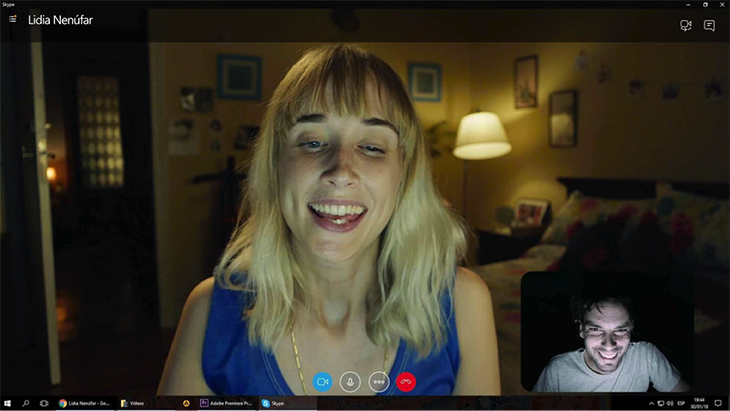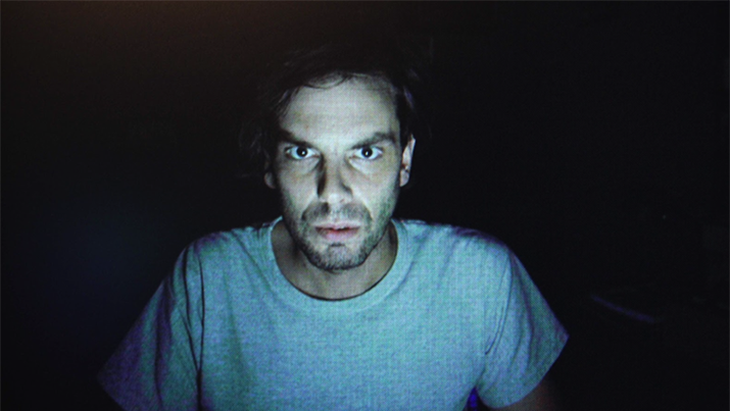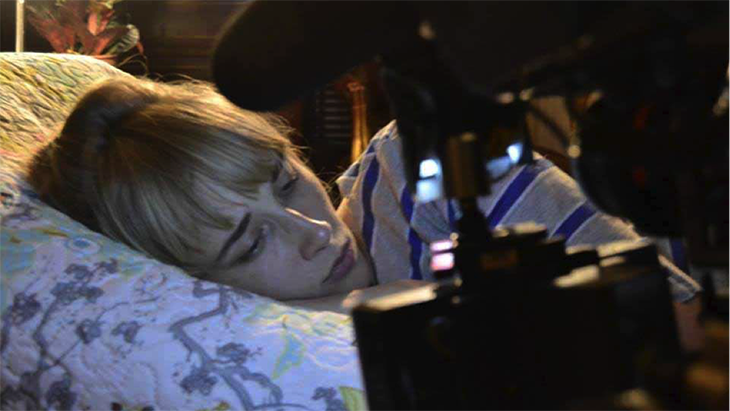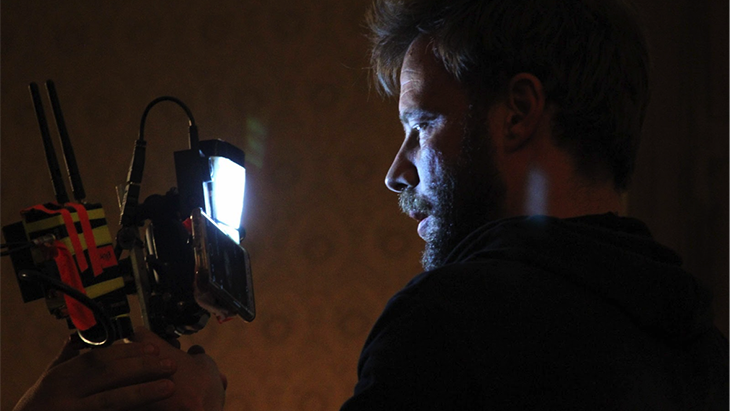The word “limbo,” has many meanings.
For Mario E. Levit, director and founder of Argentine production company Cruz del Sur CINE, its reference to an unknown place made it the perfect title for a web series that explores the depths of the digital world.
“Limbo is the final destination of all communication generated through the Internet,” he says. “We consider that communication normal and ordinary, but in the hands of a paranoid or innocent person, this ‘limbo’ can be a terrible place.”
Directed by Fabián Forte, Limbo launches in May, with each of the eight episodes running seven minutes long.
Filmed in Buenos Aires in February 2018, it marks the first Latin American web series to be co-produced with Spain. Argentina’s Cruz del Sur CINE worked with production company Aquí y Allí Films out of Spain, and are also exploring partnerships with Radio Televisión Española as well as a U.S. network.
The Power of a New Format
The production was first conceived as a feature film by scriptwriter Nicolás Britos, and gained momentum when it won the National Fiction Web Series Production Contest organized by Argentina’s National Institute of Cinema and Audiovisual Arts (INCAA).
Levit began looking into web series as another possible format, and “realized this was what I have always wanted to do.”
“The way audience consumption habits have changed is crucial,” he says. “I think there is a lack of quality productions for the web; productions that satisfy viewer behavior of ‘anytime, anywhere,’ that also innovate within this type of format, intended to be watched between subway stations.”
Once the prize was awarded, Levit decided to pursue a web series by looking abroad for co-production deals.
“In Argentina, we don’t have a strong market for web series; in the region there are only good intentions, so I immediately thought of Spain because the series itself takes place in both Buenos Aires and Madrid,” he says.
Meanwhile, Pedro Hernández Santos, founder and director of Aquí y Allí Films, had been looking to focus on a different type of production for a long time.
“Everything is changing so fast you no longer know what viewers are looking for, so we wanted to research other formats,” he says. “I was intrigued by the world of web series, but it was an unknown for me. However, I loved the script of Limbo from the beginning, because it is incredibly well written and has this clear concept of eight episodes, seven minutes. It was groundbreaking in many ways.”
One of the first challenges was to decide if two of the characters, who were from Spain in the script, were going to be played by Spanish or Argentine actors who could portray a neutral accent.
“This was the first discussion of ideas and many people thought that, since there was not a strong history of web series production based in the region, there was no reason to bring Spanish actors all the way to Argentina. But the script and the work we were doing empowered me to be more ambitious,” says Levit.
Aquí y Allí Films provided the Spanish cast, which includes Eloy Azorín of Grand Hotel and Todo sobre mi madre (All about My Mother), Ingrid García-Jonsson of Hermosa Juventud (Beautiful Youth), who was nominated for a Goya Award for best female newcomer, and Argentine Demián Salomon of Aterrados (Terrified).
A Strong Digital Narrative
Limbo tells the story of Lidia (García-Jonsson), an actress who buys a house in the mountains of Madrid, and connects online with Wally (Salomón) the house’s former owner, who lives in Argentina. They fall in love through a long-distance digital romance, until the communication is hindered by a glitch on their screens. Lidia can also hear other people who seem to be living secretly in her house. And their conversations are interfered with by Rodrigo (Azorín), Lidia’s ex-boyfriend who hacks into the couple’s communications.
The story is told from different mobile devices, with characters appearing only through screens.


“What looks like a romantic comedy evolves into a thriller when you realize the glitches are in fact ghosts. Then, it transitions into a mystery, and ends with a touch of horror,” says Levit. “As with all good endings, the story redefines itself: nothing is really what you see, and everything you see is actually a part of something else.”
Although the plot is set in two houses, the production was designed to be shot on a single location in Buenos Aires. Two different rooms were used to generate real-time conversations.
“It was a very smart move to have two camera units shooting it all live so that conversations really happened. This provides a sense of realism to the series,” says Hernández Santos.


It also was an innovative method of filming, says Levit.
“We created a mechanism where the cameras would sometimes remain stationary, and at other times follow the characters’ movements, so that Lidia and Wally appeared connected in the distance in real time, and they could see and hear one another. It took some trial and error in pre-production, because there was no technological precedent that could deliver that solution,” he says.
The series was recorded in 4K and with a technical crew trained in cinema and advertising.
One of the strengths of the project lies in post-production. Because each of the lead characters uses a different type of computer—PC and Mac—it was necessary to adapt the design of the social platforms they both use.
Extending the Communication Strategy
Limbo intends to grow via promotional assets that complement the webcast . One of those initiatives explores the development of a virtual game related to the characters’ houses and the glitch effect. A campaign also is being considered that would allow users to follow the lives of the fictional characters on social media.
“Our objective is that Limbo captivates people with viral actions that differ from those that usually attract the masses. I believe the potential of transmedia communication is huge, with possibilities for content development and production that have yet to be exploited,” says Levit.
Additional elements of the promotional strategy are also underway, such as the audiovisual draft of the opening credits that appears below. The design is based on the glitch effect, evoking the interference of the screens of the characters’ devices.
“When we began to search for references, we found inspiration in glitch art. We wanted to base the look on those types of distortions,” says Levit.
New Destinations for Distribution
The web series will have its own app available through over-the-top (OTT) services across Latin America and Europe. In addition, it is expected to run for two more seasons, and a feature film based on the story is in consideration.
“It is a format we think can be easily exported,” says Hernández Santos. “We are not only making arrangements for the series to run in other countries, but we are also open to selling the format so adaptations can be made.”
Expectations for the project are high, especially for a product created in such a short time. The producers hope that the series will gain viewers as episodes roll out.
“We don’t know yet whether the audience will prefer to wait for all 56 minutes to be released in order to watch the whole series at once, but we believe it is a project that will capture the audience,” he says.
Levit sees Limbo as an ambitious project, influenced by consumers from two very different cultures in Latin America and Europe.
“It is the first time I have worked with this type of format, and I am interested in stepping into this land much like a curious child who wants everything, who is aware he doesn’t know much about it, but who feels supported by something that is greatly valuable,” he says.
Levit also considers web series to be a type of format suitable for channeling Argentina’s creative flow.
“In this country it is not unusual to hold two jobs at the same time, a situation that enhances creativity. There is a huge talent pool, but it needs a place to converge so that communication, broadcast, distribution and marketing become easier,” he says. “I believe systems like this format are ideal for this scenario.”
Version español: La serie web “Limbo” explora el potencial de este formato
Tags:













































__twocolumncontent.jpg)











